Football Facilities
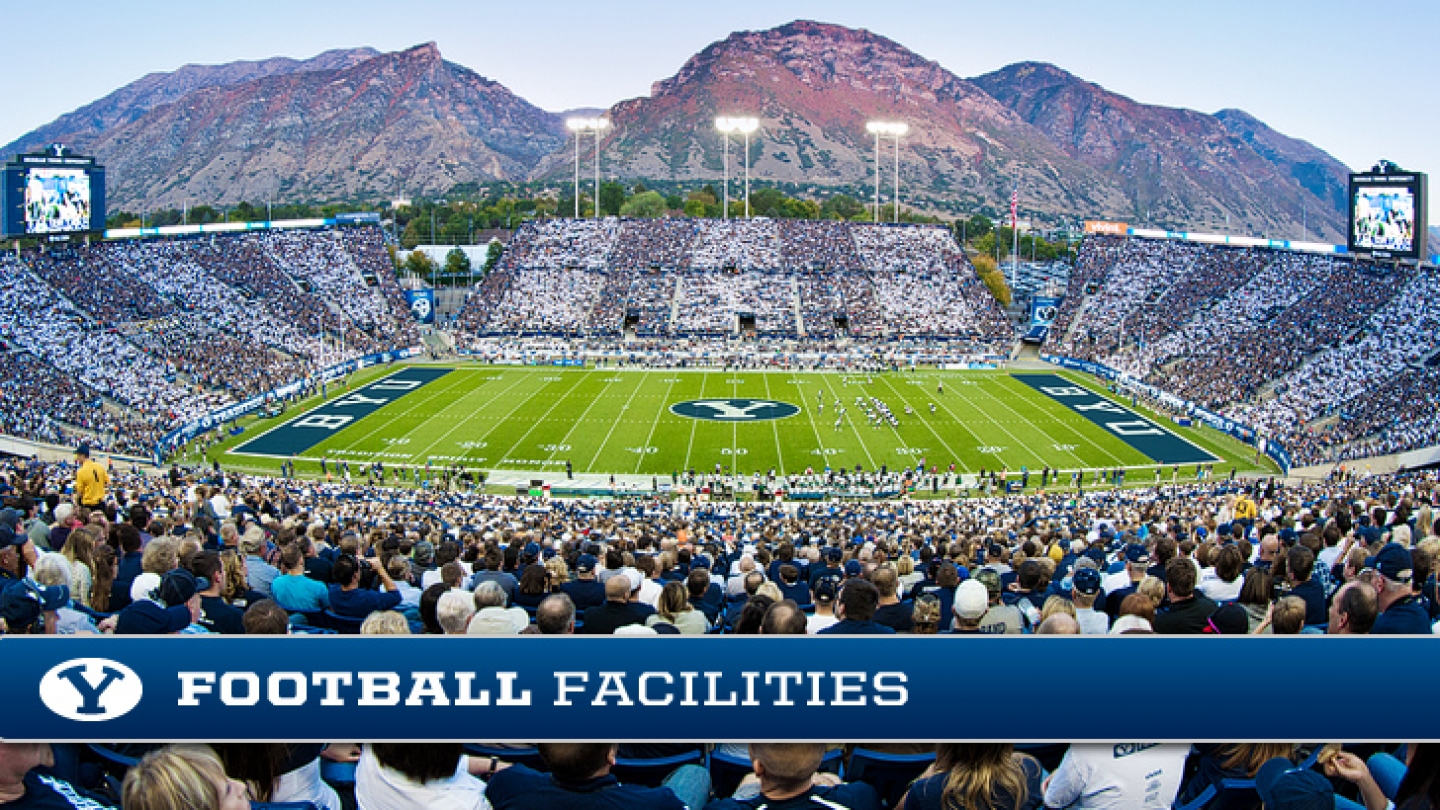
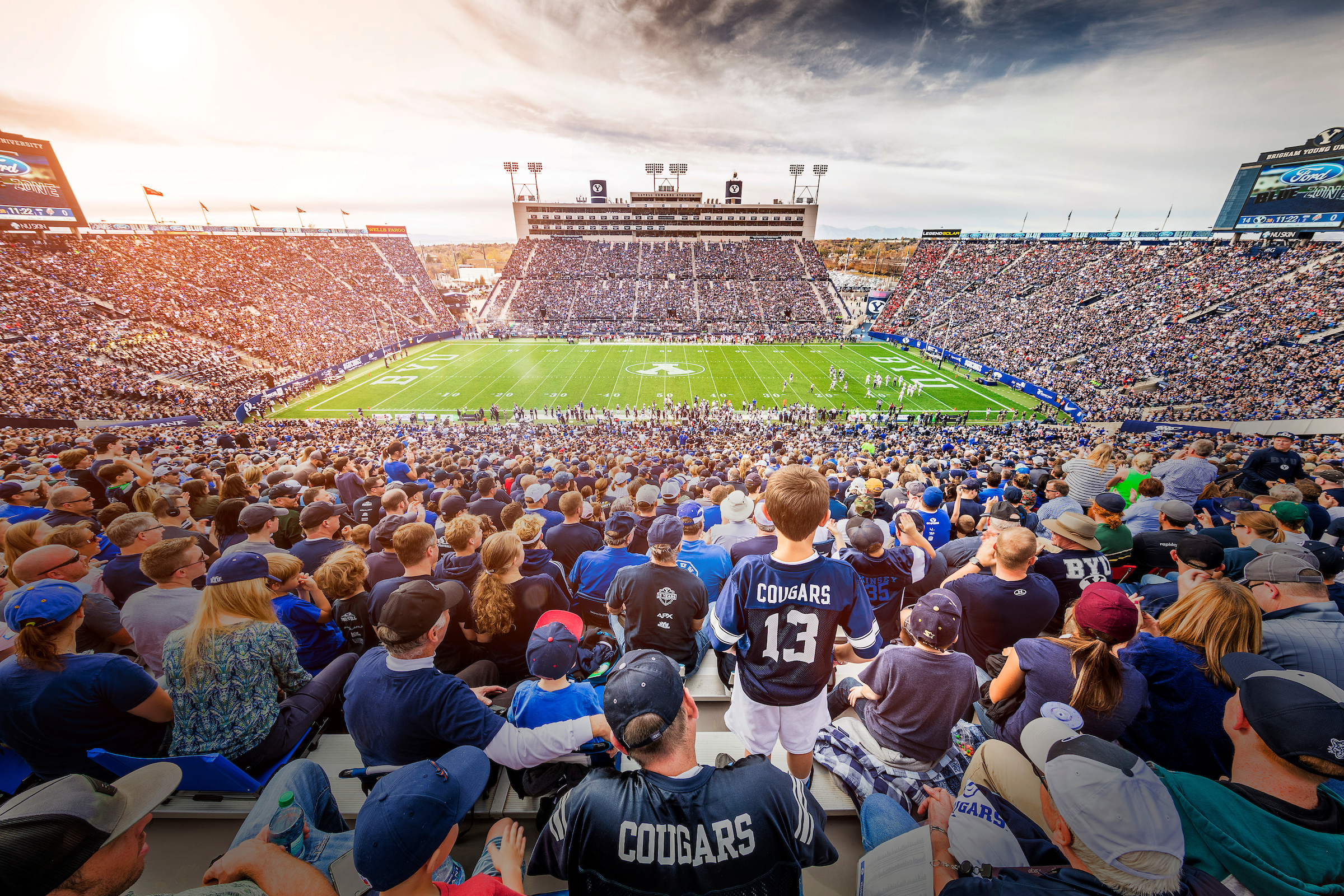
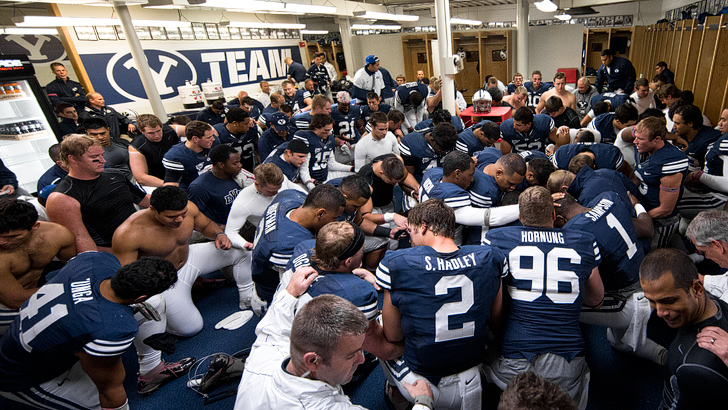
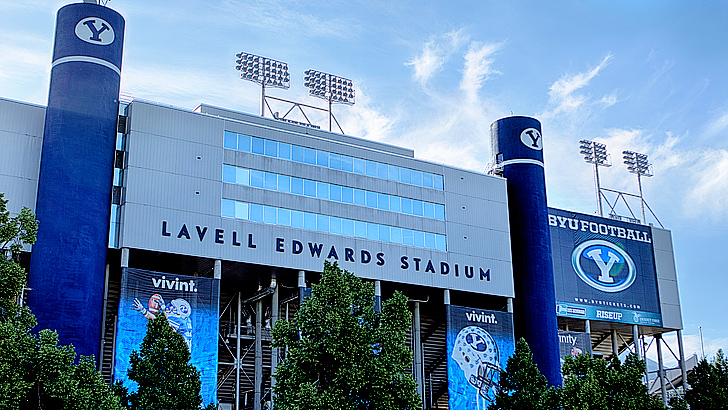
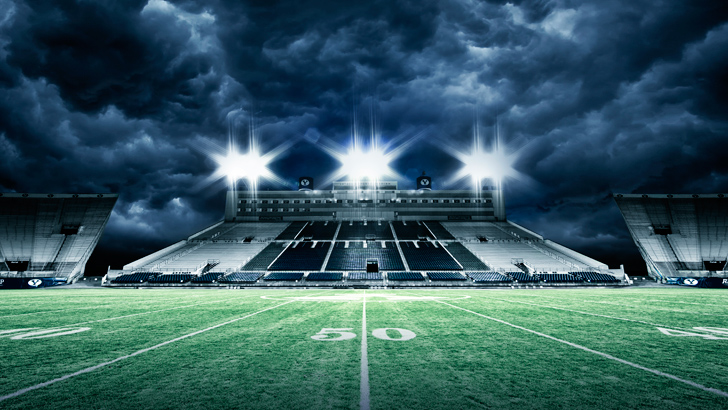
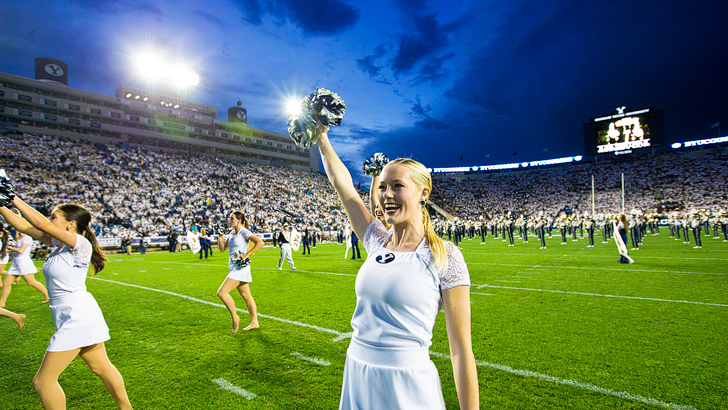
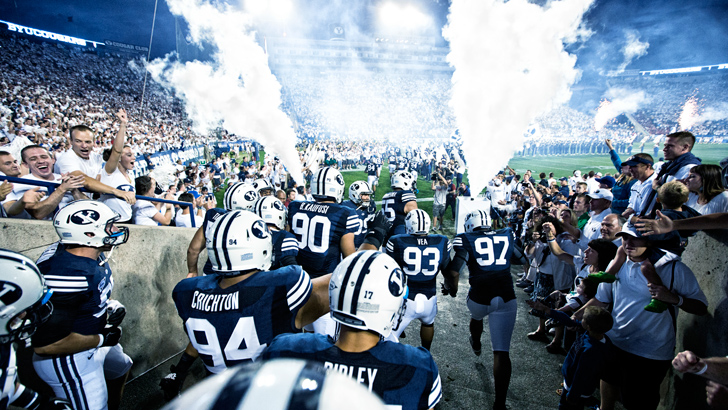
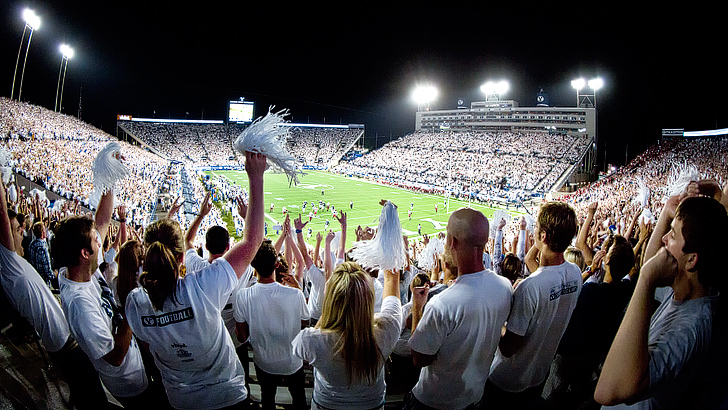
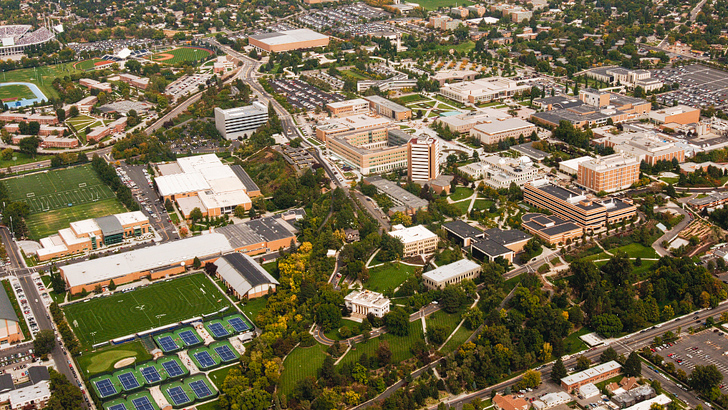
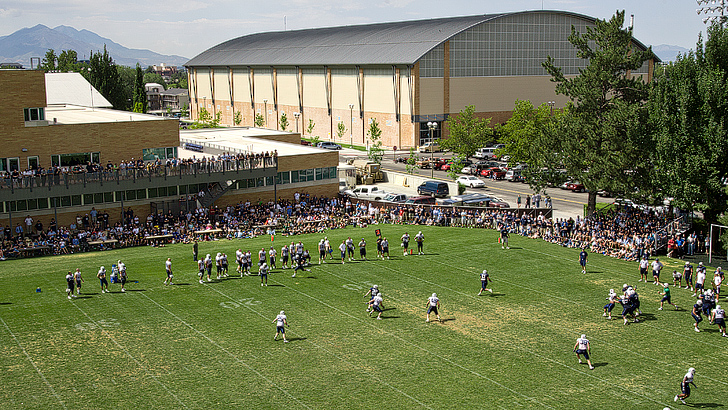
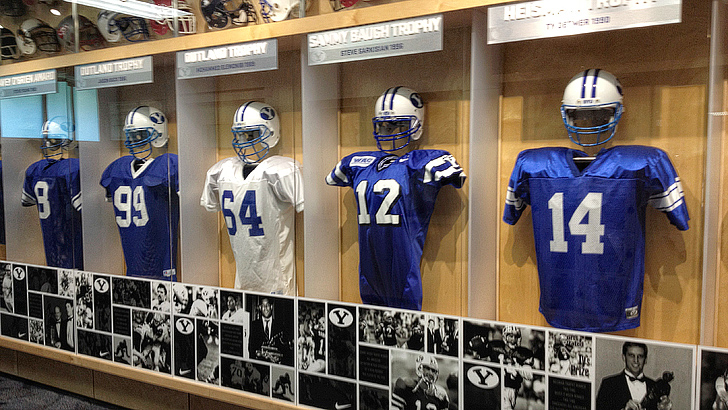
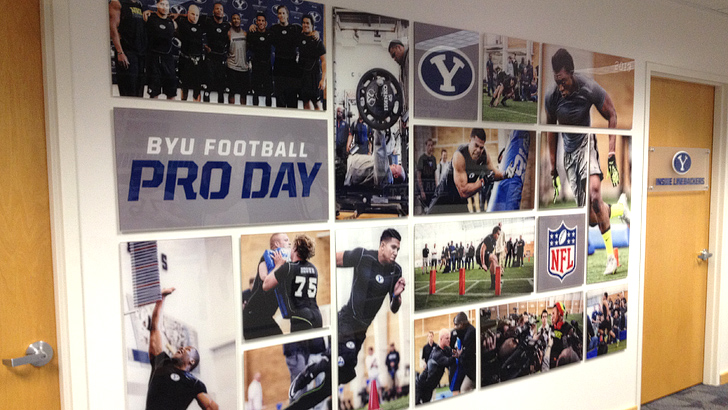
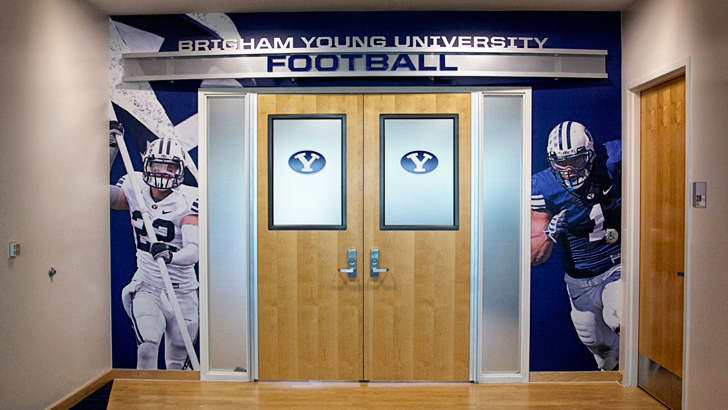
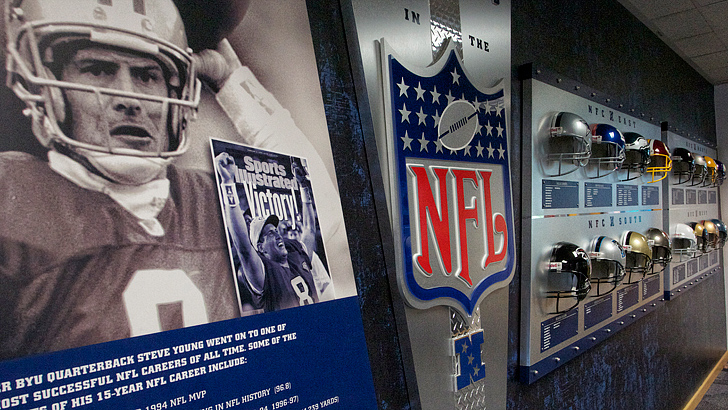
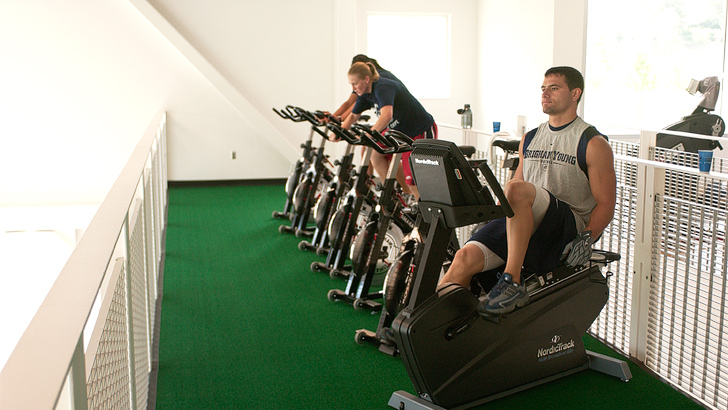
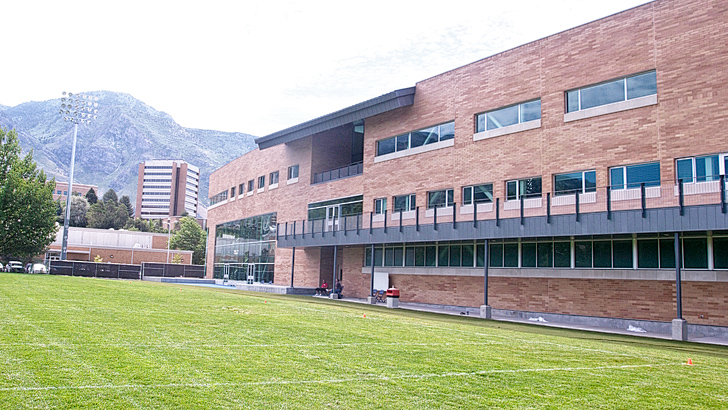
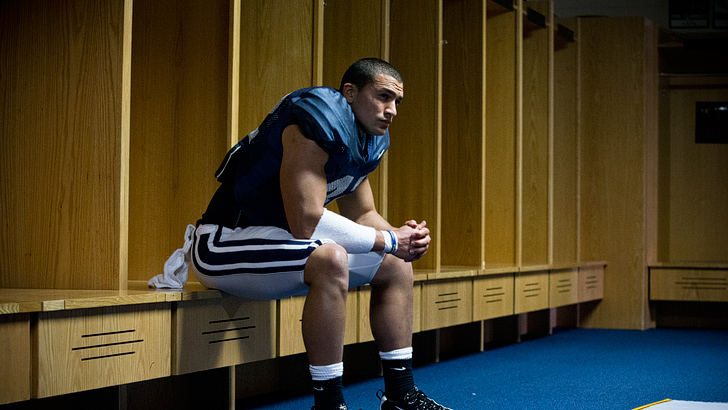
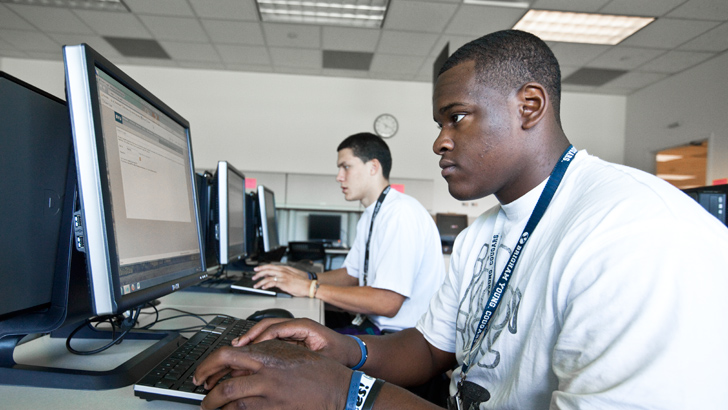
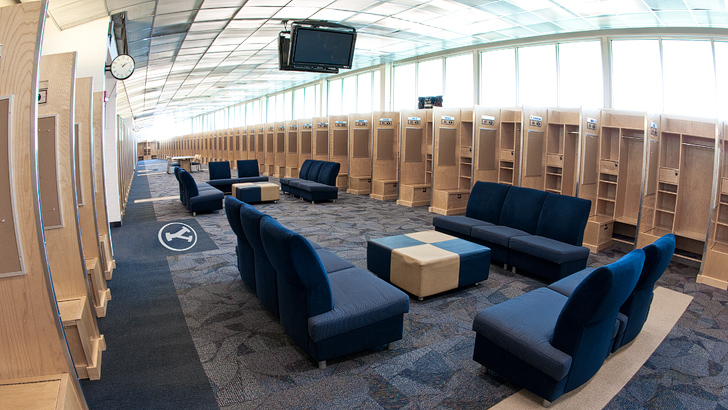
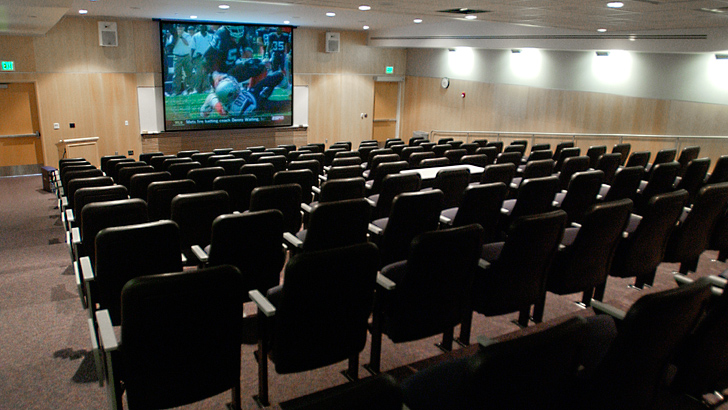
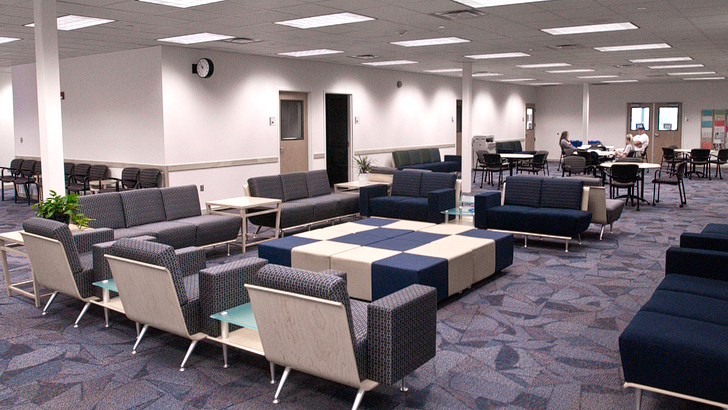
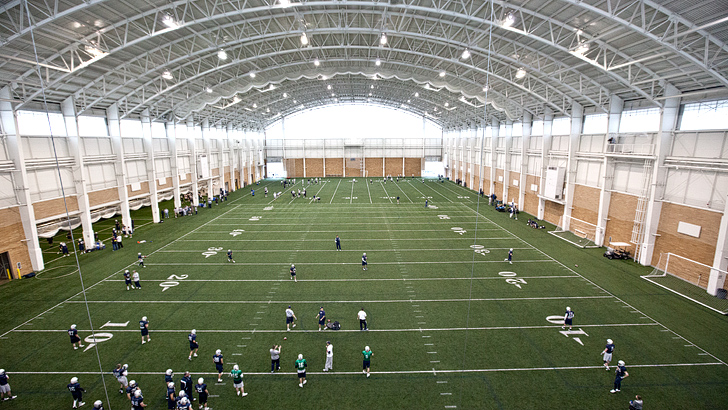
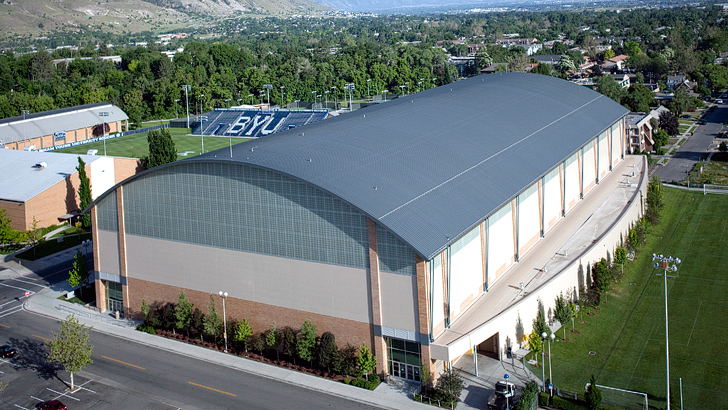
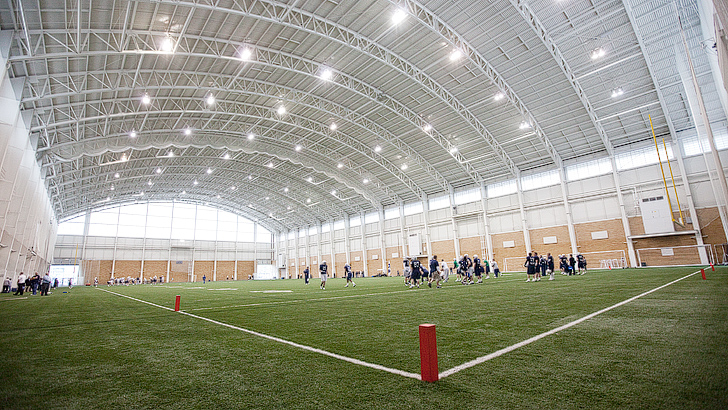
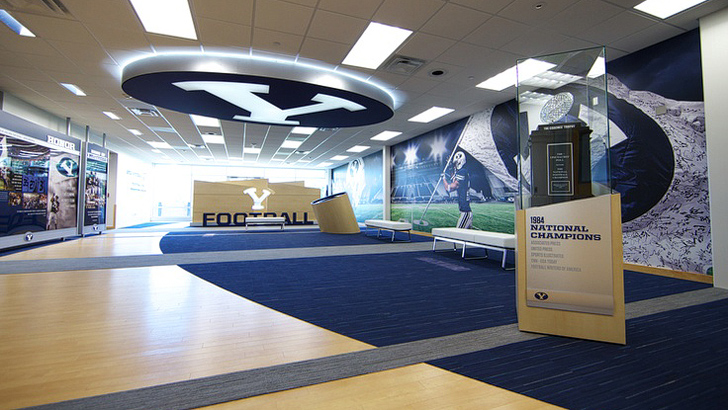
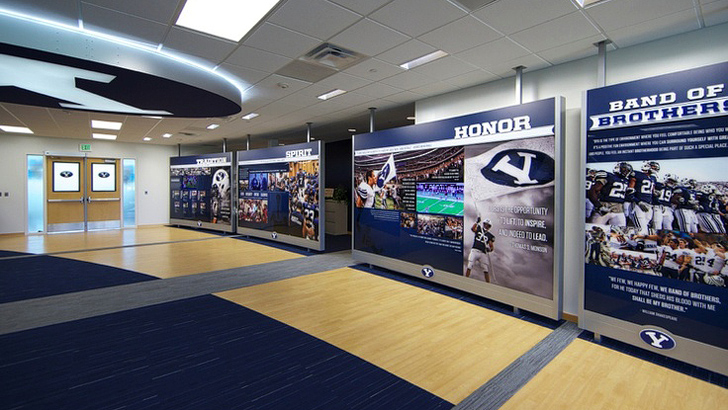
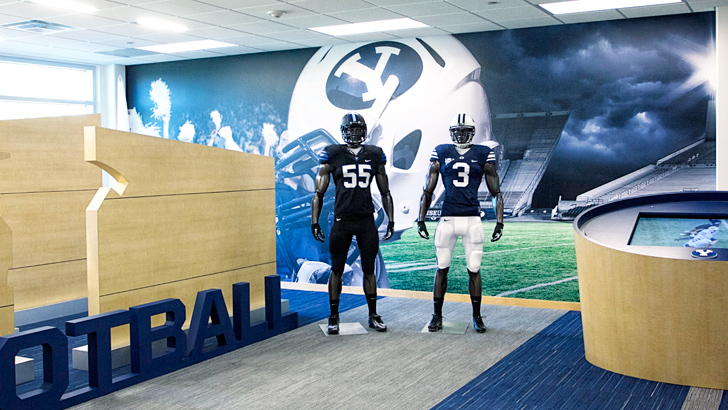
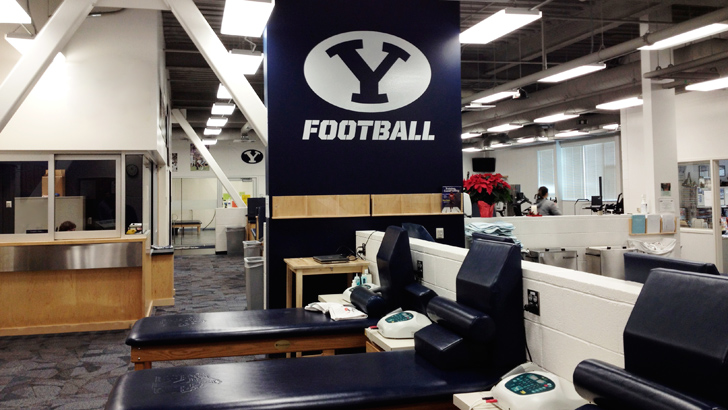
Locker Room
LaVell Edwards Stadium, with its 63,470-seat capacity, video scoreboards and immaculate press boxes, is home to legendary BYU football.
Originally known as Cougar Stadium, the stadium was renamed with the retirement of legendary head football coach LaVell Edwards at the conclusion of the 2000 season.
Edwards Stadium was built in 1964 with a seating capacity of 45,000 (including temporary bleachers placed at each of the end zones). As a result of increased seating demands, BYU made another renovation in 1982, adding stands to the north and south end zones, lowering the field eight feet and removing the track surrounding the field (home to the 1967 and 1975 NCAA Track and Field Championships).
The stadium expansion increased the seating capacity to over 65,000. The crowd of 64,253 that gathered for BYU's first game in the expanded stadium on September 25, 1982 was reported at the time as "the largest gathering ever in Utah history." Since its expansion in 1982, the stadium has consistently ranked among the nation's top 25 in attendance.
Some of the stadium's well-known features include a box-bowl seating configuration, a grass playing surface and a four-level press box.
In 2003 BYU added a luxury "Club Seating" area to the east stands, taking the capacity of Edwards Stadium to 64,045. In 2010 and 2011 BYU created additional wheelchair access inside the stadium, which reduced the overall capacity to 63,725 in 2010 and 63,470 in 2011.
THE FIELD
The field is covered with a sand-based natural turf capable of draining eight inches of rain per hour. The well-kept grass field is consistently deemed one of the best in the country.
VIDEO SCOREBOARD
In 2012, BYU replaced the video walls and scoreboards at LaVell Edwards Stadium. The project included state-of-art LED video walls in the north and south end zones, as well as LED ribbon boards across the top of both end zones.
COUGAR ROOM
The Cougar Club Room, a common meeting place for Cougar Club members, is located in LaVell Edwards Stadium. The room is used for pre- and post-game activities as well as for meetings and banquets during the year.
PRESS BOX
The LaVell Edwards Stadium press box has been named the "Provo Marriott" by the media who cover BYU football. Rising over 10 stories high, the four-level press box is located on the west side of the stadium and runs the entire length of the stands.
In 1982, 1988 and 1997 the Football Writers Association of America cited BYU for its "outstanding press box working area."
Levels one and two of the press box contain 42 private loges, each one equipped with 12 padded chairs, a television, radio, telephone, refrigerator, sink and game programs. The BYU President's Box, which includes 163 padded chairs, five television sets and a buffet area, is also located on the first floor.
Level three is reserved for the print and electronic media along with all the game operators. The statistics, public address, sound and scoreboard controls are all located on the third level. Approximately 300 people work on the third level during games. Level four is primarily used for television game filming.
ADDITIONAL STADIUM EVENTS
Besides the regular-season football games, LaVell Edwards Stadium is also used for a variety of other purposes. Music concerts have been hosted there as well as the annual "Stadium of Fire", the July 4th Spectacular held as part of America's Freedom Festival. LaVell Edwards Stadium is also the home of high school playoff games and the Rocky Mountain Band Competition every year.
















